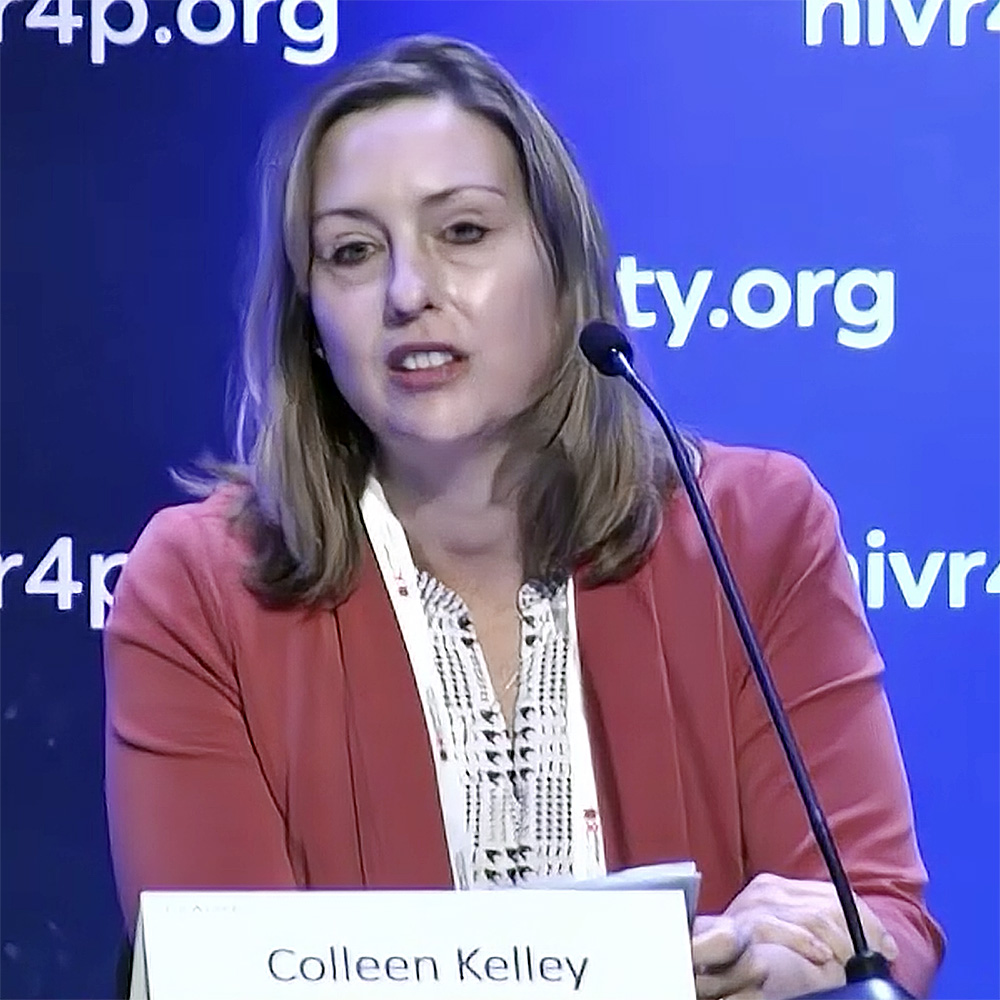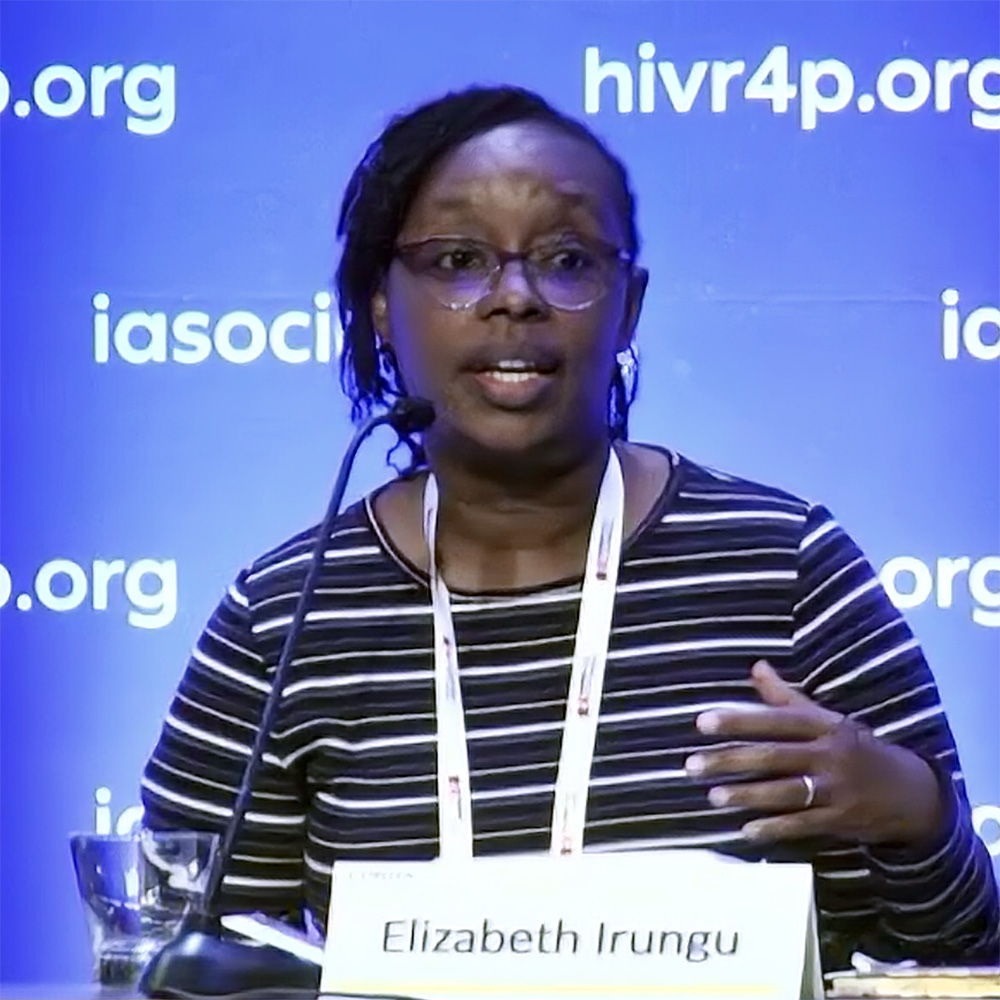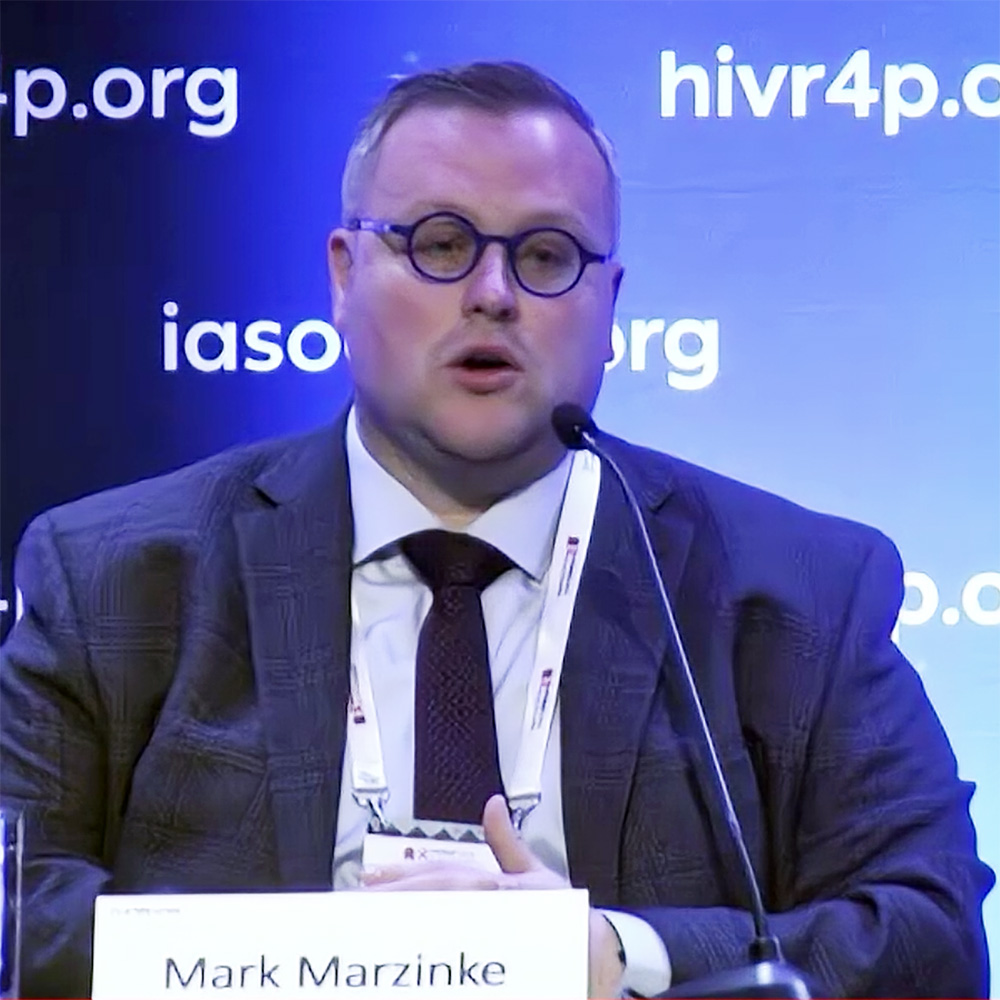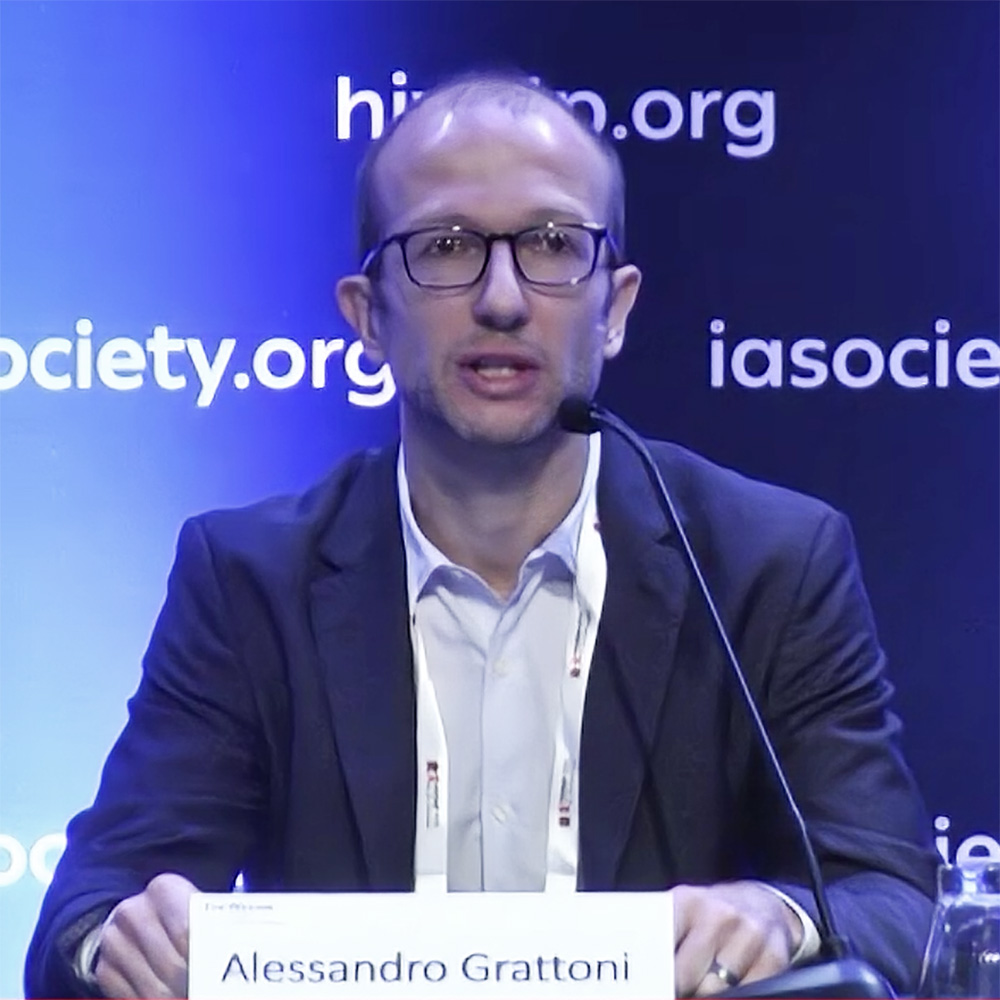New drugs, strategies—and choices—at HIVR4P, the 5th HIV Research for Prevention Conference
New methods of HIV prevention—drugs and delivery strategies—and the importance of people having options were the key points of a press conference at the fifth international HIV Research for Prevention Conference (known as HIVR4P) being held in Lima, Peru, October 6–10.

Colleen Kelley, MD, MPH
“Sexual and gender minority and racial and ethnic minority populations remain disproportionately affected by HIV and have not achieved the full benefits of PrEP in part due to PrEP access and uptake, as well as challenges with long-term adherence to daily oral regimens,” said Colleen Kelley, MD, MPH, of Emory University. “Therefore, additional PrEP options that do not require daily oral adherence are needed.”
Lenacapvir is the first of a new class of HIV drug that’s a multistage HIV capsid inhibitor that is injected every six months. The drug’s maker, Gilead Sciences, is conducting a series of clinical trials called PURPOSE to test lenacapavir as HIV prevention in different population groups.
In June, PURPOSE 1 results were announced—no cases of HIV were reported in the 2,134 cisgender women who participated, an unprecedented 100% success rate.
PURPOSE 2 was conducted among HIV-negative cisgender gay, bisexual and other men, trans women, transmen and gender-diverse individuals in Argentina, Brazil, Mexico, Peru, South Africa, Thailand and the United States who have sex with partners assigned male at birth. Two other PURPOSE studies are in progress—PURPOSE 3, centering on cisgender women in the U.S., and PURPOSE 4, among people who use injection drugs.
In September, PURPOSE 2 results from an interim analysis showed that lenacapavir had reduced HIV acquisitions by 96% compared to background HIV incidence (the number of diagnoses expected in a population in absence of any medication) and demonstrated superiority to taking a daily pill of Truvada, an HIV treatment drug that is also used for HIV prevention.
Only two new acquisitions of HIV occurred among the 2,183 participants who took part in a clinical study testing the efficacy of lenacapavir, administered by injection every six months for HIV prevention. There were 1,088 participants in the oral Truvada arm. Kelley reported that 26 participants discontinued lenacapavir because of injection reactions compared to three in the group that received a placebo shot.
“The results of PURPOSE 2 show that twice-yearly lenacapavir for PrEP is efficacious,” she said. “It is safe and a well tolerated, choice with the potential to to improve PrEP use in a globally racially and ethnically and gender diverse population, with the goal of reducing the global burden of HIV and ending the HIV epidemic.”
Kelley expressed her appreciation for the PURPOSE 2 clinicians and volunteers. “Without your willingness to engage and participate in clinical trials, we cannot progress.”
In the week prior to HIVR4P, Gilead announced a licensing agreement allowing six drug makers to manufacture a generic version of lenacapavir in 120 countries; notable, however, was the exclusion of several Latin American countries, including some that had participated in PURPOSE 2 trials. Kelley was asked if researchers can play a role in greater access to new drugs.
“I think the researcher’s greatest role is to join with advocates and the community to ask and demand that the drug is available to the people who need it most, including and especially those people that participated in the clinical trials,” she said.
Hosted by the International AIDS Society, HIVR4P is the only global scientific conference focused exclusively on HIV prevention research. This is the first time that the conference is being held in Latin America.
Among other announcements at the conference:
“We hope that by holding the conference in Lima, we can help draw attention to the urgent need to scale up HIV prevention efforts across Latin America,” said IAS president Beatriz Grinsztejn, who is also a member of the PURPOSE 2 study team. “Ours is one of the only regions in the world where HIV is on the rise. It’s alarming that new HIV acquisitions in Latin America increased by 9% between 2010 and 2023 despite the advent of powerful new prevention tools like PrEP.”
Among other announcements at the conference:
Evidence that the three-month dapivirine vaginal ring is more effective compared to the monthly ring
- A PrEP choice study finds women prefer a daily pill over a dapivirine vaginal ring for HIV prevention
- No drug-drug interactions found between long-acting cabotegravir for PrEP and hormonal contraceptives
- A refillable subdermal implant for ultra-long-acting delivery works with different antiretroviral drugs for PrEP
- Proof of concept demonstrated for an innovative new vaccine dosing strategy that improves early immune responses
Three-month dapivirine vaginal ring for HIV prevention shows promise
Effectiveness of a three-month dapivirine vaginal ring (DVR) is likely to be "at least equal" to the monthly DVR, according to a study from South Africa.
The monthly DVR, the world's first woman-controlled HIV prevention product, has been approved for use in 11 African countries. When inserted, the vaginal ring slowly releases the antiretroviral drug dapivirine over the course of one month. After a month, the ring must be replaced for continued protection.

Jeremy Nuttall
“We're interested in developing a longer-acting version for a number of reasons,” said Jeremy Nuttall of the Population Council’s Center for Biomedical Research during the press conference. “Firstly, the reduced burden on the user in terms of fewer insertions and visits to the clinic, which in turn could lead to increased adherence and effectiveness of the product, reduced annual cost, requiring only four rings annually, rather than 12, and reduced waste and environmental impact. The three-month dapavirine ring is identical to the one-month ring, except that it contains 100 mg of dapavirine rather than 25 mg; it's made using the same silicone, and it looks the same and it feels the same.”
IPM 054 is a phase 1, open-label, randomized crossover trial that compared a three-month (100mg) DVR compared with the one-month (25mg) DVR in 124 HIV-negative women. Based on dapivirine concentrations in plasma after women used each type of ring, the study team determined that the three-month DVR is pharmacokinetically superior.
The three-month DVR will expand options and choice for women to protect their health and accelerate global efforts to end the HIV epidemic. By increasing convenience to women, the three-month ring may also increase acceptability and adherence.
“We're currently preparing to seek regulatory approval for the three-month ring as a line extension to the one-month ring,” Nuttall said. “We're targeting entrance into the market as early as 2026, potentially replacing the one-month ring and providing a more convenient and cost-effective option for women. And I'd just like to end on emphasizing the importance of choice in combating the epidemic. The three-month ring represents another prevention technology and an important additional option for women.”
PrEP choice study finds moderate uptake of dapivirine vaginal ring among women in Africa

Elizabeth Irungu
A study conducted in five African countries found that when given a choice between different types of HIV prevention, many women chose the dapivirine vaginal ring—also known as the PrEP ring—although most preferred daily oral PrEP, according to Elizabeth Irungu of Jhpiego, an international nonprofit health organization affiliated with Johns Hopkins University.
The CATALYST study involved 3,967 participants. At enrollment, 66% chose oral PrEP, 30% chose the DVR and 4% chose no PrEP method. DVR uptake was 15% among pregnant women and 21% among breastfeeding women.
Additionally, 45% of the women were age 24 years or younger, 26% reported sex work, 9% were pregnant, 12% were breastfeeding and 68% had never taken PrEP.
Women who reported having multiple sex partners in the past three months and women who were currently using a contraceptive method were more likely to choose the ring. Participants under the age of 25, new PrEP users and participants who were pregnant or breastfeeding were more likely to opt for oral PrEP.
Asked about the reluctance of younger women ages 15–24 to use the ring, Nuttall said, “There is no biological reason that we're aware of that would mean that the ring would be less effective in that age group, but it's a question of finding ways to help them to be more adherent and to want to use it.”
“Let's give it time,” Irungu said, pointing out that there was very little awareness done about the ring. “It is still early. I think as you get older women using it, then it becomes [accepted], a little more normalized, and younger women will want it.”
“We conclude from CATALYST that women are taking advantage of choice, and they are choosing a method that works for them, and for some, the ring is their choice despite its modest efficacy,” she said. “Providing choice also did seem to bring in former PrEP users into the HIV prevention program, but we also report that many women are still choosing to use oral PrEP
Participants who chose oral PrEP said they did so because it was easy to use (59%) and worked well (32%); women who chose the vaginal ring said it was easy to use (57%) and did not require swallowing pills (53%).
“The CATALYST study is ongoing and has now started stage two, which is offering the PrEP ring, oral PrEP and long-acting cabotegravir,” said Irungu.
Conducted at public health sites in Kenya, Lesotho, South Africa, Uganda and Zimbabwe, the study is funded by PEPFAR and USAID through the MOSAIC project. Its findings will inform implementation of PrEP choice in the region.
No drug-drug interactions between long-acting cabotegravir and hormonal contraceptives
In 2020, the HPTN-084 clinical trial found that cabotegravir (CAB-LA), a long-acting retroviral, injected once every eight weeks, was well tolerated and found highly effective in protecting women from HIV compared to the daily oral PrEP drug Truvada.

Mark Marzinke
A sub-study of HPTN 084 has now observed no pharmacologic interactions between long-acting CAB-LA and hormonal contraceptives, according to presenter Mark Marzinke of the Johns Hopkins University School of Medicine.
The sub-study assessed potential drug-drug interactions between CAB-LA and Truvada and three hormonal contraceptives—etonogestrel, norethindrone or medroxyprogesterone acetate (MPA). From the clinical trial, 170 participants took part in the sub-study’s two arms.
After enrollment, samples were taken at weeks 25, 49 and 73. Concentrations of the contraceptives were comparable between study arms for all three contraceptive types. The percentage of participants with concentrations high enough for ovulation suppression was high and did not differ between arms. CAB-LA concentrations were comparable across contraceptive types. However, adherence to oral Truvada was so low—36% Marzinke reported—that the study team could not effectively evaluate interactions between Truvada and hormone concentrations.
Drug-agnostic refillable subdermal implant provides ultra-long-acting delivery of antiretrovirals for HIV prevention
Tests in nonhuman primates found that a new implant works well for over two years with different PrEP drugs for ultra-long-acting delivery and can be refilled while remaining under the skin.
So far, the implant has been tested on non-human primates using two different HIV drugs—islatravir and MK-8527, an antiretroviral being developed by Merck that is also being tested for PrEP. The implant is made of a titanium casing and a silicon nanochannel membrane that controls drug release. Unlike traditional implants, it can be refilled through the skin with a minimally invasive injection.

Alessandro Grattoni
“We have demonstrated using any combination with islatrovir that the device could sustain islatravir delivery and islatravir plasma concentration for 29 months, uninterrupted, without having sort of any refilling required,” said Alessandro Grattoni of Houston Methodist Hospital. “We achieved 100% PrEP efficacy in both vaginal and rectal challenges in non-human primates and the implant demonstrated itself to be safe and well tolerated in for the entire time of the study. We have ongoing studies with MK-8527 that show similar results.”
The study team concluded that the implant offers safe, effective and long-lasting protection against HIV, and that its ability to be refilled by injection while remaining under the skin “extends release potentially throughout the recipient’s lifespan.”
The implant could serve as a “multiprevention technology” because it could deliver one or more antiretrovirals for PrEP or HIV treatment, potentially in combination with contraceptives. The study team believes that a drug-loaded implant could be produced at low cost, making it a viable option for low-resource countries.
New dosing strategy improves early immune responses in HIV vaccine study

William Hahn
Does the way a vaccine is administered affect the body’s immune response? Can a new dosing strategy improve that response? Those were questions addressed by William Hahn of the Fred Hutchinson Cancer Institute.
Vaccines are typically delivered through “bolus” administration—a single dose that’s given all at once. The shot “primes” the immune system, prompting the immune system to react and produce antibodies; however, the vaccine that provoked the immune response dissipates quickly, usually within hours. A new HIV vaccination strategy called escalating fractional dosing delivers multiple doses to provoke a more robust immune system response.
While most clinical trials test the safety and effective of a medication, HVTN-301 is a randomized controlled clinical trial intended primarily to compare the safety and effectiveness of bolus administration versus a series of multiple shots among its 52 participants.
“We know that a six-shot prime is not going to be something that can be scaled up,” acknowledged Hahn; the goal was proof of concept, that the new strategy would work better.
“The CD 4 T cells and vaccine-specific B cells, the quality and the quantity of the antibodies—were all improved by splitting up the vaccine into six doses over a three-week period.” he said.
“There's a lot of other work that would need to be done to sort of translate this into a vaccine that could be used in clinical practice,” he added, but that the strategy has been proven. “So we're very excited with these data.”
Asked what the next step is, Hahn said, “I think this really shows that establishing the biological principle is important, and then you can maybe extend it to other populations and other vaccines.”
Hahn was asked another question, noting that the longevity of longer-acting HIV treatments is starting to compare to that of HIV treatment vaccines.
“You have a long-acting agent, that’s a twice a year shot and a flu shot once a year, so it's starting to get pretty close together,” he said. “What we hear from our community team and our community advocates is a choice that to adequately address the HIV epidemic, you’re going to need to offer people as many prevention choices as possible.”
As the press conference neared its end, there was one last question. A reported asked, “How is progress toward a cure?”
“There's a lot going on, nothing ready for prime time,” Elizabeth Irungu answered, “but studies are ongoing. There is a huge need for us to pursue on those, so no news for now.”

from left: Jeremy Nuttall, Elizabeth Irungu (speaking), Mark Marzinke, Alessandro Grattoni, William Hahn, Colleen Kelley and Beatriz Grinsztejn. (photo ©IAS-Nicole Bergman)


